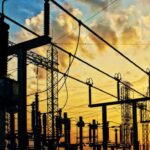The Nigerian Electricity Regulatory Commission (NERC) has approved 375.63MW off-grid and captive generation plant licences from January to September of 2024.
Analysis of the quarterly report from NERC indicated that 51 companies applied to begin generation of their power through gas, solar and hydro sources.
These companies include MTN Nigeria Communication Ltd, Flour, Nigerian Breweries, West African Ceramics Limited, Golden Penny Power Limited, among others.
Daily Trust reports that this is related to the dismal supply of power that has forced more Nigerians to seek for alternative power generation.
- Reps fume as minister, customs, immigration CGs shun hearing
- Peace deal: Uba Sani recommends Kaduna model to North West govs
While Nigeria’s national electricity grid is stuck at an average of 5,000MW, individuals and private organisations are said to be generating over 6,000MW of off-grid electricity to cater for their needs.
Recall that the Minister of Power, Adebayo Adelabu, recently decried the rate at which bulk electricity consumers abandon the national grid to generate their own electricity.
Adelabu emphasised that grid connection as a power source is more reliable than captive power plants currently being used by bulk electricity consumers.
He regretted that despite generating over 5,155MW of electricity, the power distribution companies were not taking the power allocated to them to avoid incurring debt due to low recovery.
He said, “The majority of bulk electricity users, such as industries, are off the grid due to a lack of trust and confidence in the past. They now have their own captive power plants in their industries, which is more expensive.”
According to him, the continued use of captive power rather than grid connection is more expensive.
“The average cost of producing captive power is about N350 to N400 per kilowatt-hour for those connected to gas lines. For diesel it’s about N950 or N1,000,” he said.
He stated that efforts would be made to encourage the bulk users to return to the national grid.
“Once consumers and industries see the trust, the confidence, and the stability we are giving, they would be encouraged and reconnect to the grid for a cheaper source of power.
“We aim to attain the threshold of a new era in power delivery. The federal government is still focused on Vision 30-30-30. By 2030, we aim to achieve 30GW in the medium term, with renewable energy constituting 30 per cent and universal access in the long term. We must align on the principles guiding our activities and the strategies,” the minister stated.
Similarly, NERC blamed power fluctuations for the migration of bulk users from the national grid.
The regulator in a recent report disclosed that fluctuations in grid voltage, including spikes, dips, flickers, and brownouts, could cause significant harm to consumers and result in substantial commercial losses.
It explained that extreme cases of voltage fluctuations, particularly at the distribution network level cause severe damage to industrial machines, prompting the industries to embrace captive power generation.
 Join Daily Trust WhatsApp Community For Quick Access To News and Happenings Around You.
Join Daily Trust WhatsApp Community For Quick Access To News and Happenings Around You.

